What wood is better for making a cabin
- July 6, 2023
- 0 comment
Building a cabin is an exciting endeavor that allows you to create a cozy retreat nestled in nature’s embrace. When it comes to constructing your dream cabin, selecting the right wood is crucial for both aesthetics and durability. With numerous options available, it’s essential to understand the characteristics of different wood types to make an informed decision. In this article, we will explore some of the best wood options for constructing your cabin, taking into account factors such as strength, longevity, aesthetics, and sustainability.
Wood list for making cabins
Let’s delve into this wood on making cabins.
Cedar
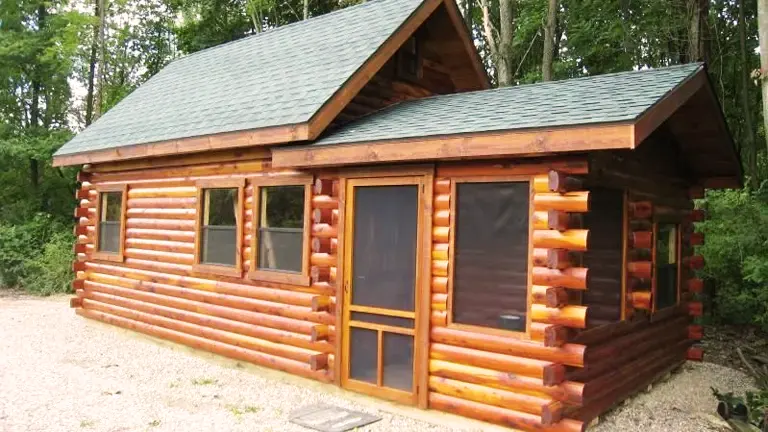
Cedar is a popular choice for cabin construction due to its natural beauty, exceptional durability, and resistance to insects and decay. Its warm tones and distinct grain patterns add a rustic charm to any cabin. Cedar also possesses natural preservatives, which make it resistant to moisture, rot, and warping. These qualities make cedar an ideal choice for cabins located in humid or rainy environments.
Pine

Pine is another widely used wood for cabin construction. Its affordability, availability, and ease of workability make it a popular option. Pine has a light color that can be stained or painted according to your preferences. While it is not as naturally resistant to decay as cedar, treated pine can still offer sufficient protection against moisture and insects. Proper maintenance, such as regular staining or sealing, can significantly enhance its longevity.
Douglas Fir
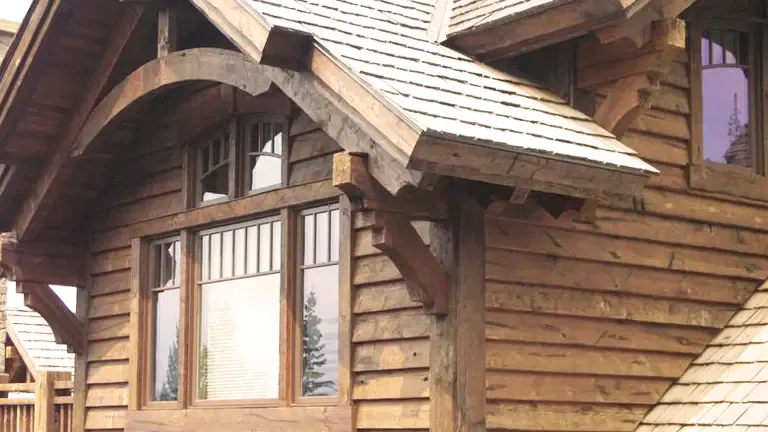
Known for its exceptional strength, Douglas Fir is an excellent choice for cabins in areas prone to strong winds or heavy snow loads. It has a beautiful reddish-brown hue and a straight-grain pattern that lends an air of elegance to your cabin. Douglas fir is durable and resists decay well, especially when properly treated. Its dimensional stability and ability to hold finishes make it a versatile wood for cabin construction.
Oak
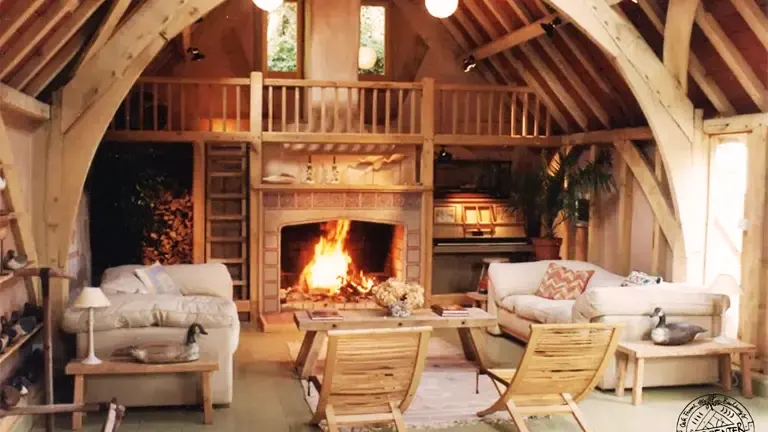
For those seeking a classic and timeless aesthetic, oak is a premium choice. Oak is renowned for its strength, density, and resistance to moisture, making it a long-lasting option for cabin construction. It possesses a distinct grain pattern that adds character to your cabin’s interior and exterior. While oak can be more expensive compared to other wood types, its durability and beauty make it a worthwhile investment.
Spruce
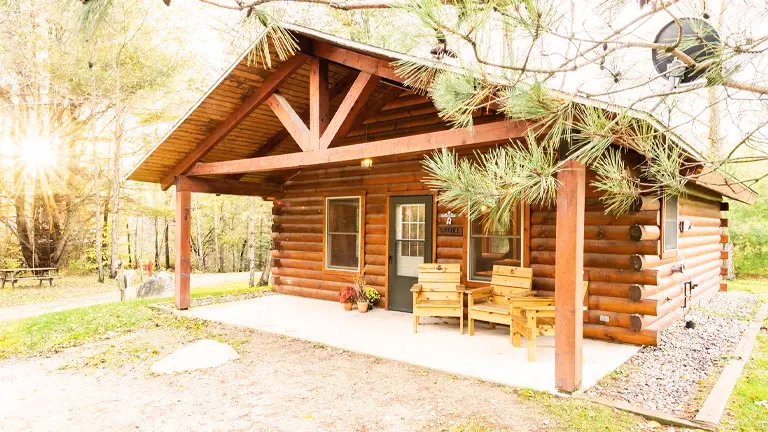
Spruce is a popular choice for cabins due to its strength-to-weight ratio, affordability, and light color. It is relatively easy to work with and accepts paint and stains well. Spruce offers good dimensional stability and is known for its resistance to warping. However, it may require regular maintenance to protect against decay and insects.
Sustainability Considerations
When choosing wood for your cabin, it is important to consider sustainability. Look for wood that is responsibly sourced, either from certified sustainable forests or through reclaimed and salvaged materials. Choosing sustainably harvested wood helps preserve our forests and ensures the long-term viability of our natural resources.
Conclusion
Selecting the right wood for your cabin is crucial to create a durable, visually appealing, and sustainable structure. Each type of wood offers unique characteristics, allowing you to tailor your cabin to your specific needs and preferences. Whether you prioritize durability, aesthetics, or cost-effectiveness, there is a wood type that will meet your requirements. Consider factors such as strength, longevity, aesthetics, and sustainability when making your decision. With the right choice of wood, you can create a cabin that will be cherished for generations to come.
Frequently Asked Questions
1. What are the best types of wood for building a cabin? There are several types of wood that are commonly used for building cabins, including pine, cedar, spruce, and oak. Each has its own advantages and drawbacks in terms of durability, aesthetics, cost, and availability.
2. Why is pine often used for cabins? Pine is often used because it’s readily available and tends to be less expensive than some other types of wood. It’s also relatively light, which can make it easier to work with. However, it’s not as resistant to decay or insects as some other types of wood.
3. Is cedar a good choice for a cabin? Cedar is a popular choice for cabins because it’s naturally resistant to decay and insects. It also has a distinctive scent and a beautiful, warm color. However, it can be more expensive than some other options.
4. What are the benefits of using spruce for a cabin? Spruce is another common choice for cabins. It’s relatively strong and light, and it has a smooth, uniform appearance. Like pine, it’s also usually quite affordable. However, it’s not as resistant to decay or insects as cedar.
5. Can oak be used for building a cabin? Oak is very strong and durable, making it a good choice for elements of a cabin that need to withstand heavy loads or wear. However, oak can be more difficult to work with and more expensive than some other types of wood.
6. What should I consider when choosing wood for my cabin? Factors to consider include the local climate and potential for insect problems, your budget, the desired look and feel of the cabin, and the wood’s durability and ease of maintenance.
7. Are there eco-friendly options for cabin wood? Yes, look for wood from sustainably managed forests or reclaimed wood. Some types of wood, like cedar and oak, grow slower and therefore aren’t as renewable as faster-growing species like pine and spruce.
8. Should I use different types of wood for different parts of the cabin? It can be beneficial to use different types of wood for different parts of the cabin based on their characteristics. For example, a more durable, weather-resistant wood might be used for the exterior, while a more aesthetically pleasing wood could be used for the interior.
9. How should I treat the wood to make it last longer? Using a good-quality sealant or stain can protect the wood from moisture, UV damage, and insects. It’s usually a good idea to treat the wood before building the cabin and to reapply the treatment every few years.
10. Can I mix and match different types of wood when building a cabin? Yes, many cabin builders mix and match different types of wood to balance cost, durability, and aesthetics. For example, you might use a more expensive, attractive wood for visible areas inside the cabin, and a more affordable, durable wood for the framing and exterior
We’re eager to hear from you! Feel free to share your personal experiences and thoughts about the choice of wood for building cabins in the comment section below. Your insights could provide valuable guidance to others considering different wood options for their cabin projects.

John Carlos
Forestry AuthorThe beauty of logging isn't just about felling trees. It's about understanding nature, mastering the art of chainsaws, and respecting the environment. I believe in sharing my experiences and knowledge, ensuring that we move towards a sustainable future together.

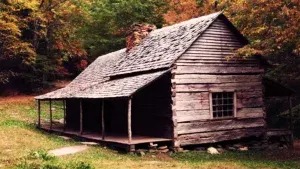


Leave your comment